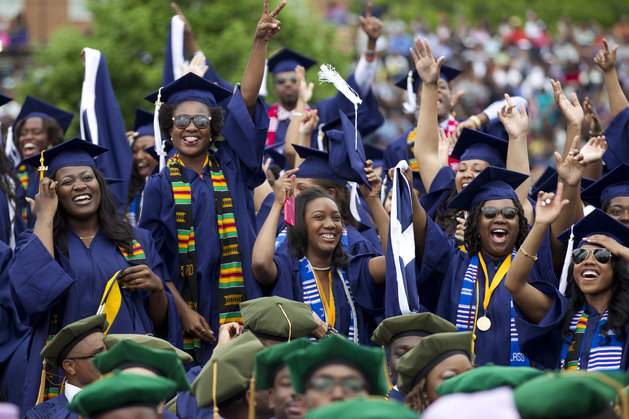 When David Wilson was first contacted in 2009 about becoming president of Morgan State University in Baltimore, he wasn’t interested
When David Wilson was first contacted in 2009 about becoming president of Morgan State University in Baltimore, he wasn’t interested
Wilson had envisioned working until his retirement at the University of Wisconsin, where he served as chancellor of the University of Wisconsin Colleges and the University of Wisconsin Extension. He didn’t know much about Morgan State, a historically black public university.
But after being talked into a campus visit, Wilson was struck by the students he met there.
“I saw my own story with them,” says Wilson, a graduate of Alabama’s Tuskegee University, a historically black university in Alabama. “They really saw being there as their last opportunity to transform their lives and their families.”
Wilson was sold, and he became president of Morgan State in July, 2010. But the task he inherited wasn’t easy.
This past summer, two private Historically Black Colleges and Universities, or HBCUs, Morris Brown College in Atlanta and Saint Paul’s College in Lawrenceville, Virginia, faced possible extinction. Morris Brown filed for bankruptcy in August, while Saint Paul’s was given a temporary reprieve at the end of August when it won an injunction to remain accredited.
HBCUs, established after the Civil War to educate newly-freed slaves who were denied entrance to most other colleges and universities, are at a crossroads. As majority-white institutions become increasingly diverse, the percentage of the nation’s black college students who attend HBCUs has plummeted over the last several decades.
Meanwhile, HBCUs are becoming less black: Black students are now a minority at seven of the 105 institutions the federal government designates as HBCUs. That designation gives the colleges preferred access to some federal grants and loans, but many HBCUs are aiming to become more diverse in order to survive, and are focusing particularly on recruiting Hispanic students. Some HBCU leaders even have suggested that their schools should move away from defining themselves by their racial character.
Financial Struggles
For public HBCUs, which educate far more students than private ones, these changes come at a time of transformation for all public colleges and universities. Like other public schools, they have been shaken by budget cuts. But unlike majority-white schools, many argue they are still hampered by decades of discriminatory funding. read more…



